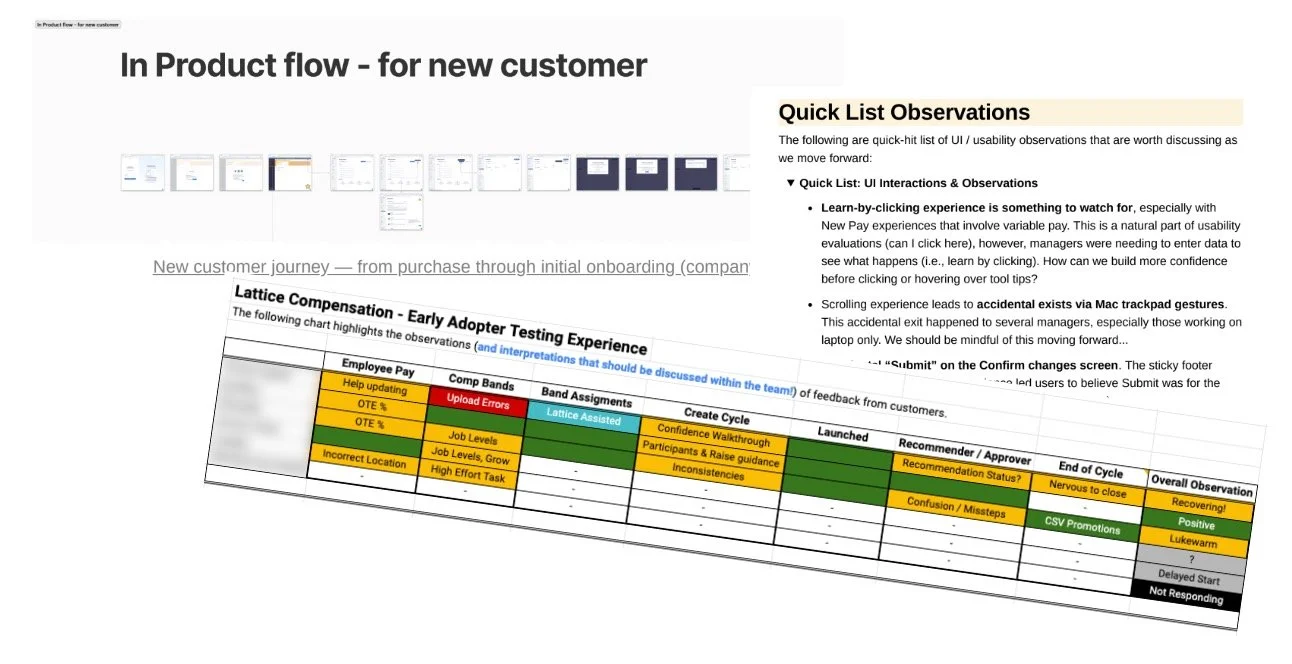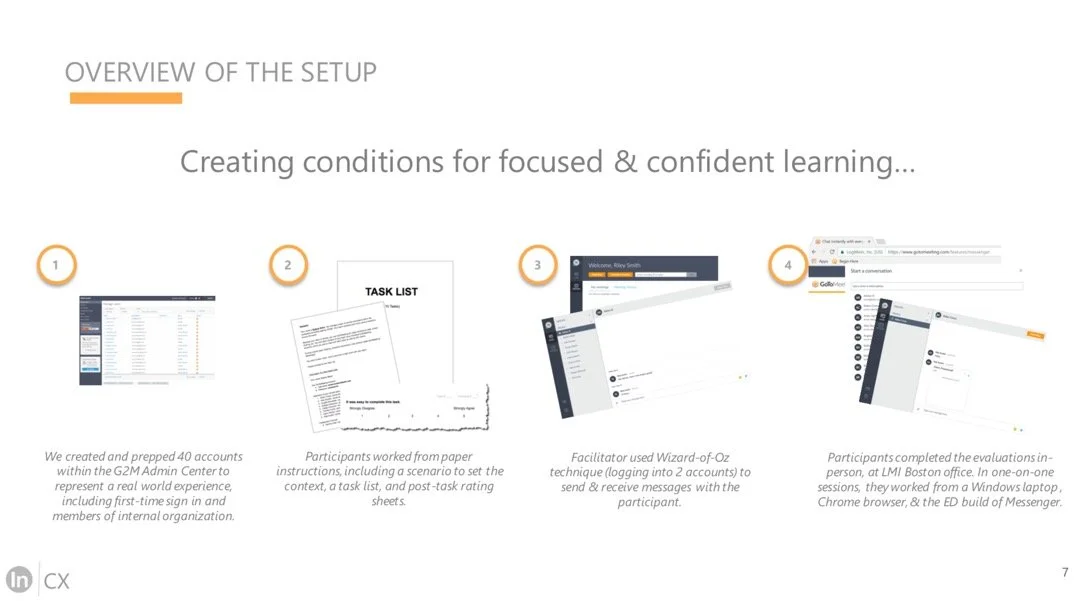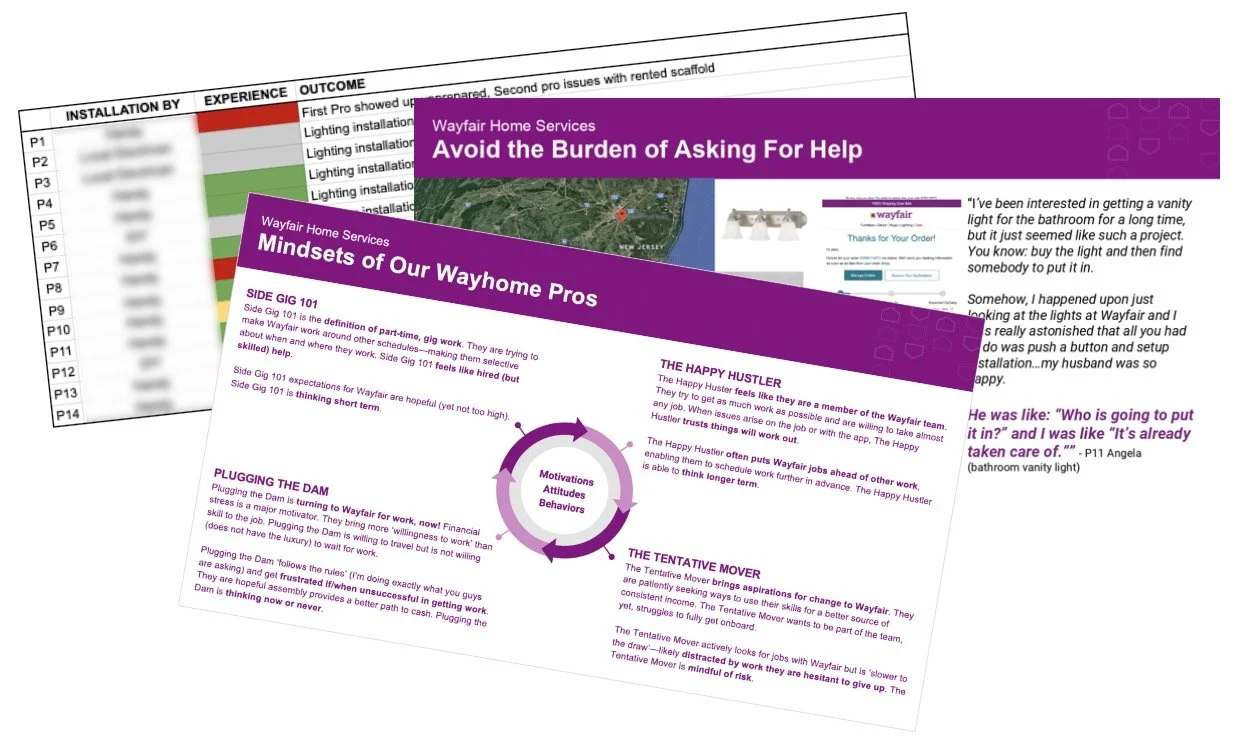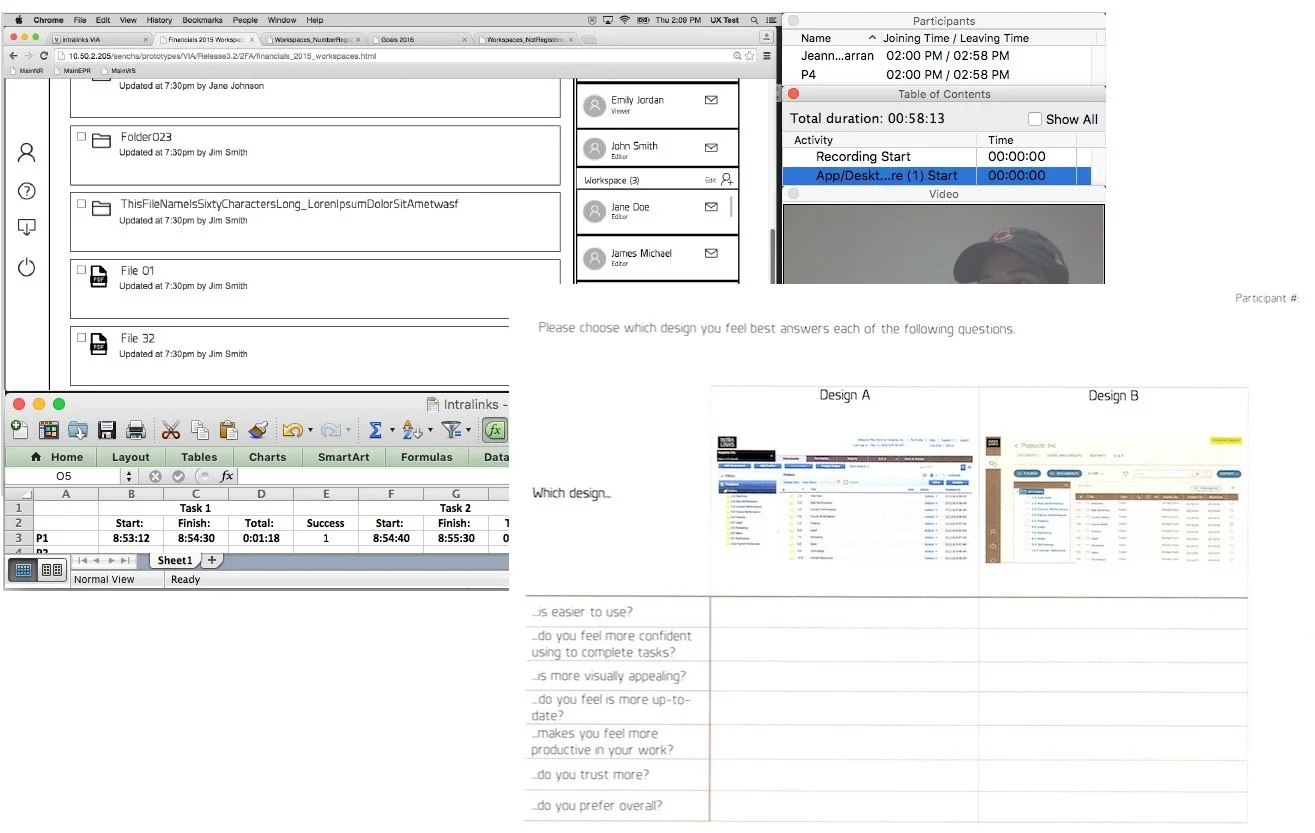MY WORK
I love learning about how people and businesses work and then trying to figure out ways to make things better for both. That’s what I do. And that’s why I love being a user experience researcher!
Here are a few project highlights…
Mixed-methods
The Lattice Compensation product team had foundational research in place but needed to strengthen the user insights required to meet the needs of small- to mid-sized companies with increasingly complex compensation program workflows.
As the Lead UX Researcher, in the year leading up to launch, I established a mixed-methods learning approach to help the team make better decisions, faster. We ran discovery research to understand user workflows, concept tests to explore early designs, usability evaluations to continuously improve user interactions & content, and more.
I also turned to stoplight (red-green-yellow) visuals to help bring focus to both positive & negative research insights. I was first introduced to these at Verizon when running usability lab and in-home (ethnography) studies on the DSL installation experience!
Usability testing
While smaller usability studies informed earlier decisions, the GoToMeeting team was seeking additional confidence before making a go-no-go call for its new Messenger product.
Given the risk and to help increase the team’s confidence in the research results, I ran a Wizard-of-Oz style usability evaluation mirroring the real-world experience of brand new users.
The study did surface small issues to triage but validated (task success, user satisfaction) that the user experience was ready for customers. Our early usability work paid off!
No, they’re not needed for every project, but Wizard-of-Oz style evaluations are a great way to learn and are so much fun to plan and facilitate!
UX strategy
The Wayfair Home Services team was expanding its assembly pro (gig) workforce but noticed higher numbers of unclaimed jobs in some regions (pros find & accept or claim jobs via a mobile app). Why were some jobs going unfilled?
To help the team get beyond the back-of-house data, I conducted in-depth interviews to learn about the day-to-day experiences of assembly pros, including pros with the highest number of completed jobs and those who had yet to claim any work.
Ultimately, this work helped surface assembly pros’ motivations & behaviors and enabled the team to make better informed design and product strategy decisions. But it truly resonated across the team on a human level — real people are on the other side of the tech we’re building.
This is one of my favorite projects of all time!
Heuristic evaluation
Cyber-security professionals are a highly technical and hard-to-reach audience, so time spent with them in the product design process is precious.
To help the CrowdStrike platform design team make the best use of time with users, I initiated heuristic evaluations to help identify common, large usability problems before turning to users.
I based the evaluations on principals of human factors (how we process information) along with agreed upon UX heuristics (in this case UI tenets & traps). The design team used the assessments to consider and make adjustments, but also to flag the questions where our users’ input mattered most.
I am a big fan of heuristic evaluations for a few reasons, one of which is innovation. By getting the basics right, we can focus our creative energy on things that will truly enhance the experience or business.
Measuring user experiences
Intralinks was considering future investments for its flagship product.
The product team was exploring options for a look-and-feel design refresh. The marketing team was looking for ways, like improved usability and speed, to stand out in the market and grow sales. The research team was asked to weigh in…
Working within a cross-functional team, I was tasked with planning and facilitating a summative usability study to measure and compare key user goals (success, time on task) and user perceptions (visual appeal, trust) of the existing experience and a proposed prototype.
The research provided leadership with data and user perspectives to inform their product strategy decisions.
These kinds of summative research projects are rare, likely because they require next-level detail to do them well. It was great to help the team by using (flexing?) this research muscle!
Pursuing fun, creativity
The Verizon Innovation Program is an accelerator focused on mobile apps and Internet of Things (IoT) that benefit from high speed wireless connectivity.
I was part of the original team, advising and conducting user research for clients. I was also part of the team creating and hosting interactive tours in Verizon’s Executive Briefing Centers.
All of that to say, my research perspective helped us tell stories & create experiences to engage audiences of Fortune 500 executives and one-person startups, alike.
I jumped at the opportunity to take on new challenges. One of which was an unattended (self-service) demo of Verizon Messages.
The ‘switchboard’ kiosk won ‘Best in Show’ Crowd Favorite at CTIA 2013!
Reach out to talk more about these projects & other ways I can help your team!






